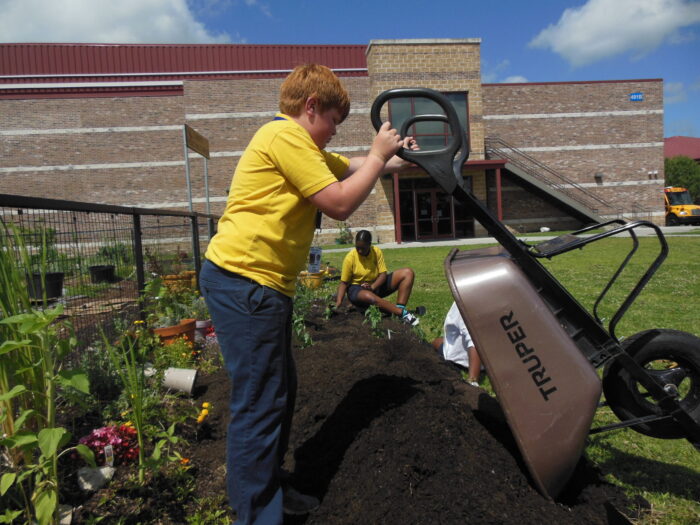
How to Start a School Garden
A school garden is more than a classroom. It’s a living bed of discovery, where every seed planted nurtures both the soil and the student. At Emeril Lagasse Foundation, we believe real change begins with small, intentional actions. Time and again, we’ve seen how a simple garden can transform a child’s confidence, a classroom’s culture and a community’s connection. From curiosity in class to creativity in the kitchen, gardens allow students to explore, grow and thrive.
The Key Components of Starting a School Garden
Want to experience this change in your school and community? The first step is understanding the key components of building a school garden. Here’s how to get started.
- Start With a Vision (and a Team)
Every thriving garden begins with a shared vision. Are you hoping to enhance science lessons, introduce students to fresh food, or create a quiet space for outdoor reflection? Whatever your goals, start by gathering a team of passionate supporters—teachers, school leaders, families and even students—who believe in the power of learning by doing. The most successful efforts start from within, with people who want to make learning feel more alive, joyful and rooted in real-world experience.
- Find a Space That Fits
You don’t need sprawling fields to start your garden. You just need the essentials to get started: a sunny corner, access to water, soil and a little creativity! Raised beds, container gardens and vertical planters can transform small or urban spaces into thriving learning environments. Remember, even modest gardens can significantly impact your students’ lives. More on that below.
- Make the Garden Part of the Classroom
School gardens are natural extensions of the classroom. They bring science and health education to life, but their lessons stretch even further. Math becomes meaningful when students measure rainfall or track plant growth. Language arts take root through garden journals, and history and culture come alive through food traditions and cooking activities.
To make the space truly inviting, design it with students in mind. Include wide paths for easy movement, seating for group lessons or story time, and a variety of edible and sensory plants, like herbs, sunflowers and butterfly-friendly blooms. Add playful signs to identify plants, a composting station to explore sustainability, or weather trackers to support cross-curricular learning.
- Invite the Community In
From parents and volunteers to chefs and local farmers, school gardens grow stronger when the community is involved. Local nurseries may donate plants or soil. Restaurants might offer cooking demos or ingredients for garden-to-table recipes. Grandparents can share planting tips and stories from their own backyards. These partnerships help keep the garden vibrant, nurtured and sustained over time.
The Bigger Impact of a School Garden
A school garden does more than enrich the classroom; it plants roots across the entire community. These spaces often become gathering places where students, families, educators and neighbors come together to nurture something meaningful. Whether it’s a weekend harvest, a community cooking night or simply a shared moment between a parent and child pointing out the basil they planted, gardens invite connection.
For students, the impact is personal, lasting and far-reaching. Research and real-world experience have shown that school gardens can:
- Improve academic performance
- Promote healthier eating habits
- Support mental health
- Build social-emotional skills
- Encourage physical activity
- Foster environmental stewardship
- Inspire ownership and pride
When students help plant, tend and harvest their garden, they begin to see themselves differently. They see themselves as capable, curious and deeply connected to the world around them.
Let’s Plant the Seeds for Success, Together
With the right support, a simple school garden can become a powerful space for learning and growth. Through Emeril’s Culinary Garden & Teaching Kitchen, we help schools bring garden and kitchen learning to life, with hands-on tools, professional training and a proven framework that works. Visit our How to Apply page to learn about the process, and subscribe to our newsletter for program updates.